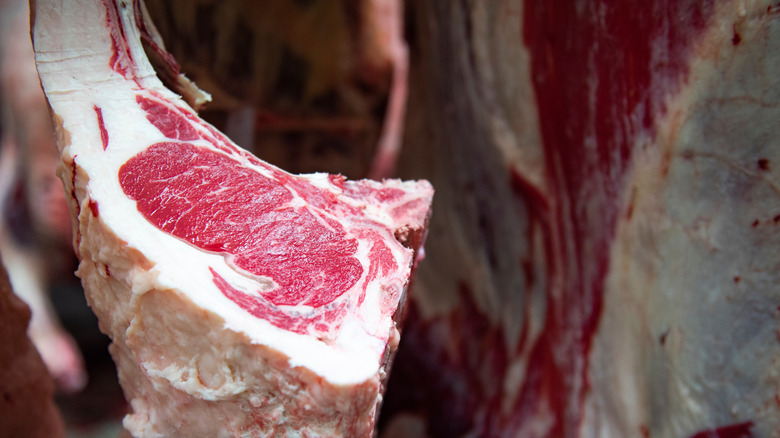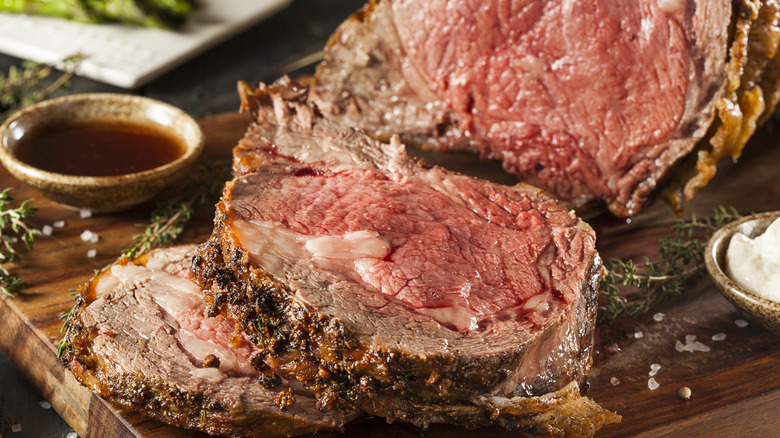Why You Should Reconsider Buying Wet-Aged Prime Rib
Beef connoisseurs have probably heard the term "dry-aged beef" as the pinnacle of beef preparation before it's cooked. But wet-aged beef has been around since the 1960s, according to the Chicago Steak Company, and it's much more common in modern meatpacking plants. Most steaks available in supermarkets are not aged through a specific process, notes the academic journal Q Open. And typical grocery store beef has spent at least seven to 10 days getting to the store, so all beef is aged somewhat, says Napoleon.
So, what are the differences between wet-aged and dry-aged beef? Dry-aged beef hangs in a refrigerator under precisely controlled conditions while the meat contacts the air. Wet-aged beef uses cryovac bags during the aging process, and the air is completely cut off from the meat. Dry aging occurs with larger cuts (also called primal cuts), according to Serious Eats. Wet aging, notes Q Open, happens to subprimal cuts (beef that has been separated further from the largest primal cuts, per S. Clyde Weaver). Both processes alter the tenderness and flavor of the meat, and both can be favored by consumers.
Wet aging is cheaper, and Cattlemen's Restaurant notes there is "no weight loss at all in the aging process." Wet aging times vary widely from half a week to three and a half months, while dry aging typically lasts one to two months, per Q Open. But if you prefer aged beef, you should probably go with dry-aged beef versus wet-aged for one specific reason.
Wet-aged beef has no added flavor value
Serious Eats explains that wet-aged beef is more tender compared to beef that isn't aged at all. However, the flavor leaves more to be desired. If you're going to invest in aged meat, dry-aged is the way to go.
Q Open looked at several studies done with wet-aged and dry-aged beef. The journal noted that there were no differences in tenderness between dry-aged and wet-aged beef, although dry aging did improve the juiciness of meats (which is different from tenderness). But the flavor is where dry-aged beef excelled. Some of the flavors found in dry-aged beef include "brown-roasted, beefy/brothy, buttery, nutty, roasted nut, and sweet," according to the journal. All of these were determined to be much better than the flavors of the wet-aged beef, which were noted as "bloody, serumy, livery, fishy, metallic, and sour."
When you're cooking, say, a prime rib roast, you're already investing in one of the best cuts of beef you can buy. So why not go with dry-aged prime rib? Serious Eats suggests purchasing choice cuts for better fattiness, as well as investing in the most-aged prime rib you can afford. Higher fat content leads to better juiciness, while dry-aged prime rib will be more flavorful.

